Looking for plastic waste statistics, facts, figures and studies? Then you've come to the right place! By 2050, there could be more plastic floating in the sea than fish. And in Germany, we use around 320,000 disposable coffee cups every hour.
Worrying data, isn't it? Such results from scientific studies, as well as general statistics and facts on global plastic waste, are crucial in helping to sensitize people to use plastic more consciously and to reduce their impact on the environment. to live as plastic-free as possible.
Because our society has a massive problem with plastic waste. The material is not biodegradable and once thrown away, the waste remains in the environment. Plastic waste in the environment foreverwhere it kills animals and destroys ecosystems. There is also a danger for us humans.
In this article, I would like to give you an understanding of the most important plastic waste facts, figures and statistics from scientific studies. From consumption data and environmental impact figures to alarming forecasts for the future. Let's go!
Here's another quick overview for you:
My please: Share this article if you want to use statistics and facts from it. You can use the web address of this page or the following reference. Thank you for your support!
https://www.careelite.de/plastik-muell-fakten
Citation: C. Schulz; CareElite.de (2024): Plastic waste statistics, facts, figures & studies 2023/2024, available at https://www.careelite.de/plastik-muell-fakten
Plastic waste consumption data
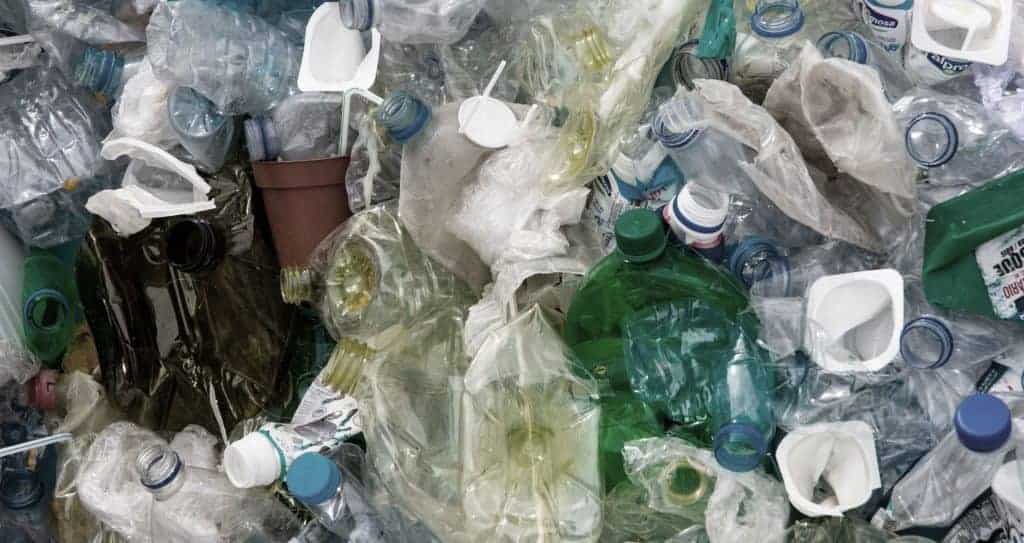
These facts about plastic waste consumption and the types of plastic waste should give you an idea within a few seconds. Impression of consumer behavior our (global) Disposable society provide
How much plastic waste do we leave behind?
- Around 41 kilograms of plastic packaging waste is what we Germans produce per capita each year. Only in Ireland (74.07), Iceland (44.55) and Portugal (41.32) is consumption even higher at European level. (Source)
- About 0.74 kilogram On average, every person produces plastic waste globally every day. The amount increases with increasing prosperity. (Source)
- About 40 percent of plastic products consumed end up in the bin after less than a month. (Source)
- Around 4 kilograms Microplastics are released into the environment per capita per year in Germany. (Source)
- 5.67 million tons of plastic are consumed in Germany every year. (Source)
What plastic waste are we leaving behind?
- Around 45 plastic bags are consumed per capita in Germany every year - including self-service shirt bags. (Source)
- Only 25 minutes is the average useful life of a plastic bag in Germany. (Source)
- Around 320,000 Coffee2Go cups are consumed per hour in Germany. That's almost 3 billion disposable cups per year. (Source)
- 500 billion Coffee2Go cups are consumed worldwide each year. (Source)
- Around 40 billion disposable straws of plastic are consumed per year in Germany alone. (Source)
- 583.3 billion plastic bottles are sold worldwide every year. (Source)
- Around 640,000 tons of plastic waste in the sea per year is caused by the fishing industry alone. (Source)
How long do plastic goods last on average?
Different plastic products also have a different, average Useful life. Here you will find the relevant figures and statistics from the last plastic atlaspublished by the Bund für Umwelt und Naturschutz Deutschland.
How long the plastic items last from the respective area on average:
- Packaging: 0.5 years
- Consumer goods: 3 years
- Textiles: 5 years
- Electronics: 8 years
- Transportation & Traffic: 13 years
- Industrial machinery: 20 years
- Construction sector: 35 years
Statistics on the production of plastic
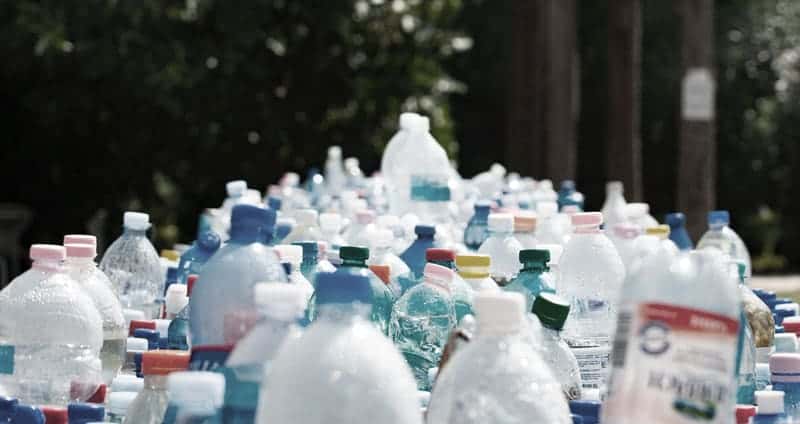
Here you will find facts and figures on the production of plastics as well as their recycling. I personally find it frightening in which large and constantly growing quantities we humans produce plastic.
How much plastic is produced?
- 21.3 million tons of plastic are produced in Germany every year. (Source)
- 391 million tons of plastic is produced by the global plastics industry every year. (Source)
- About 8.3 billion tons of plastic were generated worldwide by 2015 alone. (Source)
- About 56 percent - more than half - of the plastic ever produced worldwide has been produced since the year 2000. (Source)
- Around 12 percent of global oil production requires the production of Plastic per year. (Source)
- Around 36 percent of global plastic production result in packaging material. A further 14 percent is used for textiles and around 16 percent for buildings and other construction work. (Source)
How much plastic waste is recycled, landfilled and shipped abroad?
- 46 percent is the recycling rate for plastic waste in Germany. Out of a total of around 6.15 million tons of plastic waste, around 2.8 million tons of plastic are fed into the recycling cycle. (Source)
- Around 53 percent of the plastic waste generated are burned to generate energy. (Source)
- Over 10 percent of German packaging waste are exported abroad. For example, 9 percent is transported by ship to Malaysia and 4 percent to Indonesia. (Source)
- With around 925,953 tons of plastic waste exported Japan leads the list of top global exporters, closely followed by the USA and Germany. (Source)
- Only around 9 percent of the world's plastic waste is recycled. (Source)
Statistics on plastic waste in the environment/ocean
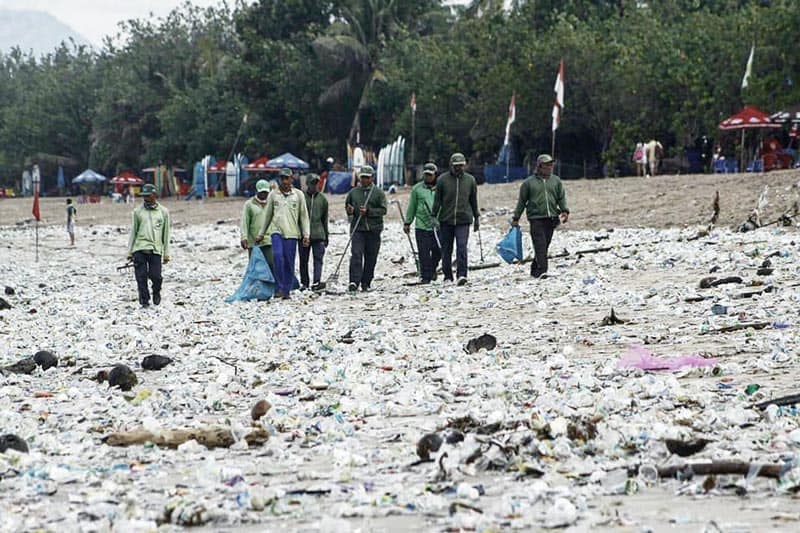
You have now learned about the consumption-related figures for plastic waste in Germany and the world. With the following facts, I would like to give you a feeling for the Follow of excessive plastic consumption for the environment.
How much plastic waste is already in the environment or is constantly being added?
- Around 10 million tons of waste end up in the environment every year. Around 75 percent of this is plastic waste. (Source)
- More than 100 million tons of plastic waste are estimated to have entered the sea so far. Around 1 percent of this floats on the sea surface. Around 33 percent can be found along the coasts and on the seabed, around 27 percent in coastal waters and around 39 percent in the open sea between the surface and the seabed. (Source)
- Around 81 percent of plastic waste in the sea originates from Asian countries, including Thailand, China, Indonesia, India and Vietnam. (Source)
How quickly do plastic objects decompose into microplastics?
Anyone who finds out about plastic waste statistics should also know how long plastic waste remains in the environment. The longer, the greater the danger. One Plastic bottle in the sea, for example, takes at least 450 yearsto decompose.
However, the plastic waste only dissolves into smaller, barely visible plastic particles. How long a Disposable diaper, by Cup holder, a Fishing line and many other things for decomposition, you can find out more on the Graphic of the Federal Environment Agency.
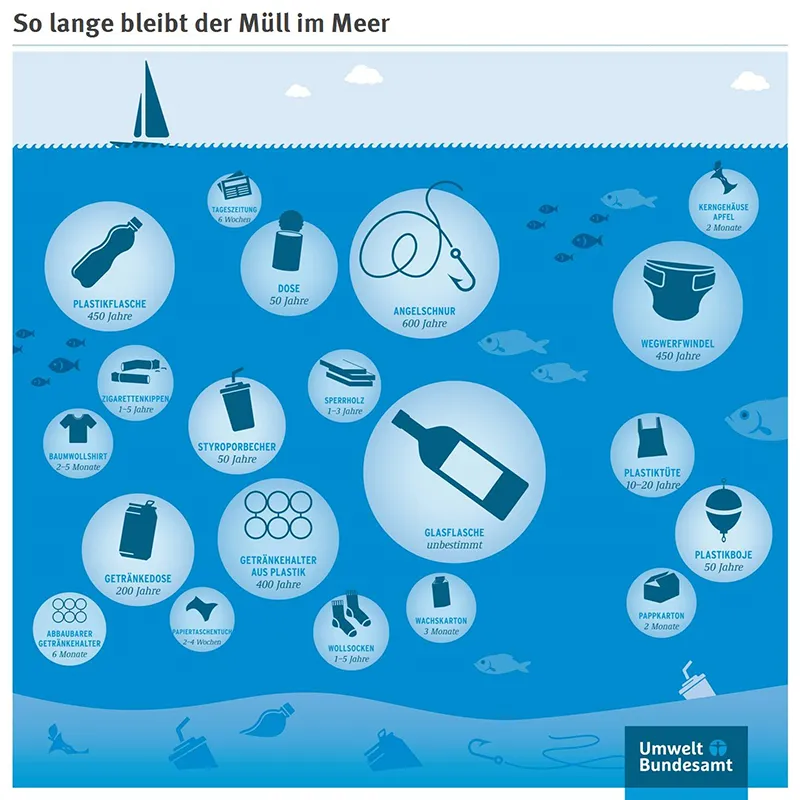
How many animals die from our plastic waste?
As plastic waste is not biodegradable, it does not massive damage in nature on. Here are the relevant plastic waste statistics on the impact on wildlife that should motivate you to do something about it.
- Around 1,000,000 seabirds and 135,000 marine mammals die every year from contact with our plastic waste. (Source)
- More than 600 different marine creatures are harmed by plastic waste in the sea. (Source)
- At least 15 percent of all species are endangered by ingestion of - or strangulation in - plastic parts. (Source)
- 34 Plastic parts is already the average size of each fulmar's stomach. (Source)
What are the statistics on the major trash swirls?
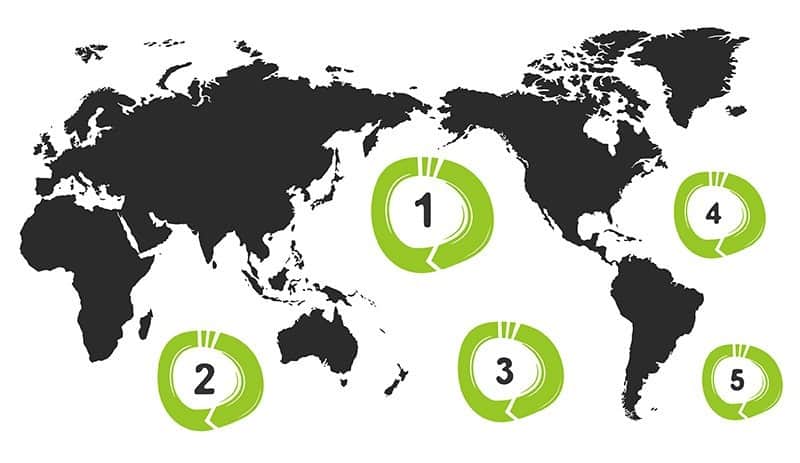
The Ocean currents drive human waste into the oceans and allow it to circulate. There are at least five huge Plastic waste swirl.
To give you an idea of the scale of the project, here are some facts about the Great Pacific Garbage Patchthe world's largest plastic waste vortex. They all come from the Dutch company The Ocean CleanUp.
- About 1.6 million square kilometers is the size of the Great Pacific Garbage Patch. That is about three times the area of France and 4.5 times the area of Germany.
- 1.8 trillion plastic parts are estimated to be floating in the Great Pacific Garbage Patch alone and are thought to weigh around 80,000 tons in total.
- About 250 plastic parts is the average amount that each person in the world has contributed to the Great Pacific Garbage Patch.
- Around 46 percent of the plastic in the Great Pacific Garbage Patch are fishing nets.
Microplastic & Health Statistics

What consequences Plastic in our meals for our health is still unclear. largely unexplored. However, it is clear that small microplastics have already led to inflammation, physiological disorders and higher mortality rates in marine animals.₄₁
Here you will find among other things facts about Microplastics in cosmetics and the plastic in our mineral water.
- Around 922 tons of microplastics are consumed in the manufacture of cosmetic products in Germany every year. (Source)
- Around 90 percent of all eye make-up and 73 percent of all lipsticks contain microplastics. (Source)
- In each of 38 different mineral watersmicroplastic particles were found in the water that researchers examined. (Source)
- Each of 8 human stool samples tested from eight different countries contained microplastics. (Source)
Helpful studies with statistics about plastic waste
Here you will find an overview of the most important and meaningful studiesthat have been carried out in Germany and globally on the plastic waste problem. Take a look inside to find out even more precise statistics, facts and figures about plastic waste.
- Kaandorp MLA et al (2023): Global mass of buoyant marine plastics dominated by large long-lived debris.
- H. Ritchie, V. Samborska and M. Roser, Global Change Data Lab: Plastic Pollution.
- ELLEN MACARTHUR FOUNDATION: The New Plastics Economy: Rethinking the future of plastics.
- P.G.C. Nayanathara Thathsarani Pilapitiya, Amila Sandaruwan Ratnayake: The world of plastic waste.
- UNEP: Marine Plastic Debris and Microplastics: Global lessons and research to inspire action and guide policy change.
- Heinrich Böll Foundation and the German Federation for the Environment and Nature Conservation: PLASTIKATLAS 2019 - Facts and figures about a world full of plastics.
- Lebreton, L., Slat, B., Ferrari, F. et al: Evidence that the Great Pacific Garbage Patch is rapidly accumulating plastic.
- Science Advances: Production, use, and fate of all plastics ever made.
Do you know of any other important studies? Then feel free to share them with me in the comments!
Plastic waste figures & forecasts for the future
Time and again, we hear about scientific forecasts that Future picture of the consequences of our plastic mania draw. Here I have recorded the estimates, which should of course be treated with caution, but are by no means unrealistic.
- Twice as much plastic as todaywe humans will probably consume in 2050. (Source)
- Four times as much plastic waste as today is estimated to be floating in the sea by 2050. (Source)
- More plastic parts than fish in the seais forecast for the year 2050. (Source)
- 99 percent of all seabirds will have plastic in their stomachs by 2050. (Source)
- Around 20 percent of global oil production will probably require the production of plastic in 2050 (Source)
- About 56 gigatons of CO2 is what the plastics we produce are expected to have produced by 2050. (Source)
Conclusion on the plastic waste figures for 2023/2024
Plastic has advantages, but Plastic also has its disadvantages. The plastic waste statistics, figures, data, facts and various studies reveal that we are facing an incredibly big task both in Germany - and of course globally!
We have to change our behavior and learnto deal with plastic in such a way that no living creature in this world suffers as a result. Because through our current use of plastic, we have created one of the biggest environmental problems of our time created.
So learn as much as possible in the article about plastic free life, like you avoid plastic waste in your everyday life really easily simply by following your heart.
"«It's just a straw», said 8 billion people."
Unknown (more under Zero Waste Quotes)
It's time to rethink. I hope that I have been able to inspire you with these statistics and facts about plastic and the plastic waste we produce. Feel free to share them with other people to make an even bigger impact. Here is the source again:
https://www.careelite.de/plastik-muell-fakten/
Do you have any questions, suggestions or other valuable data? Then please write a comment below this article.
Stay clean,

PS: You can also use my Tips for a bathroom that is as plastic-free as possible and the Kitchen without plasticto make a real difference. Good luck with the implementation!






Hello Christoph,
I somehow don't quite understand why I should reduce my plastic consumption for the environment if I dispose of the plastic normally in the trash. Apparently, almost everything in Germany is either incinerated or recycled and almost nothing ends up in landfills. It is clear to me that more plastic should be recycled and I am also aware of the plastic problem in the world, but Germany is actually rather a role model for other countries in terms of recycling, or not?
Ich würde mich über eine Antwort sehr freuen 🙂
Kind regards,
Sarih
Hi Sarih, thanks for your comment.
Plastic consists of petroleum or raw gasoline, a limited raw material. Even though our recycling rate is high, too much is burned -> which means that the limited raw material is being destroyed here. Even if we have a high recycling rate in comparison, that doesn't mean we should rest on it. Because the rate is still lousy.
In Germany, too, we have a lot of Plastic waste in the environmentespecially microplastics.
Und ist es nicht ein cooles Gefühl, wenn du es schaffst umweltbewusst zu konsumieren, sodass du nicht jeden Monat 10 Säcke Plastikmüll produziert hast? 🙂 Schau‘ dir dazu gern den Artikel Zero Waste Lifestyle an.
I look forward to your next comment and have a great evening.
Stay clean,
Christoph
You've already read the article, right?
Most of the plastic waste in Germany is exported (for recycling, but it is not proven that this happens according to the German / European guidelines).
It is very cynical to talk about recycling plastic in developing countries when we export most of our plastic waste to these countries. Everybody should recycle / dispose of his own garbage, but you can't earn money with it, so it is shipped around the world (which consumes fuel again).
The best way to deal with the problem is to reduce plastic production and consumption from the outset.
This is an extremely complex topic, because in the end there is also an energy balance to be seen: much of what is produced from plastic today was produced from other materials in the past, which requires significantly more energy (e.g. steel, aluminum, glass). Such value stream analyses can hardly be reduced to a few simple and striking sentences...
But I also always go shopping with folding box / net bags and basket, our consumption of plastic bags is about 2 bags per year for a family of four. Nevertheless, much more could be done, of course.
Dear Christoph,
We find this website very informative and would be very happy about further contributions.
Hi Hans Frans 😉
Thank you, you can expect the same!
Best regards,
Christoph
For the 11.7t plastic waste (see above) the unit million is missing.
According to the Federal Environment Agency, however, this should amount to 6 million tons of plastic...
You are absolutely right that far too much plastic is consumed and not dealt with sustainably (>recycling rate). But the units have to be right...
https://www.umweltbundesamt.de/daten/ressourcen-abfall/verwertung-entsorgung-ausgewaehlter-abfallarten/kunststoffabfaelle#textpart-2
Hi Max and thanks for your tips! Is already adjusted.
Everyone must look at their own nose, consumer, manufacturer, large corporation, politics.
If we stop buying the plastic crap, manufacturers will gradually understand that, too. But we have no time to lose.
Love greetings
Christoph
Comments are closed.